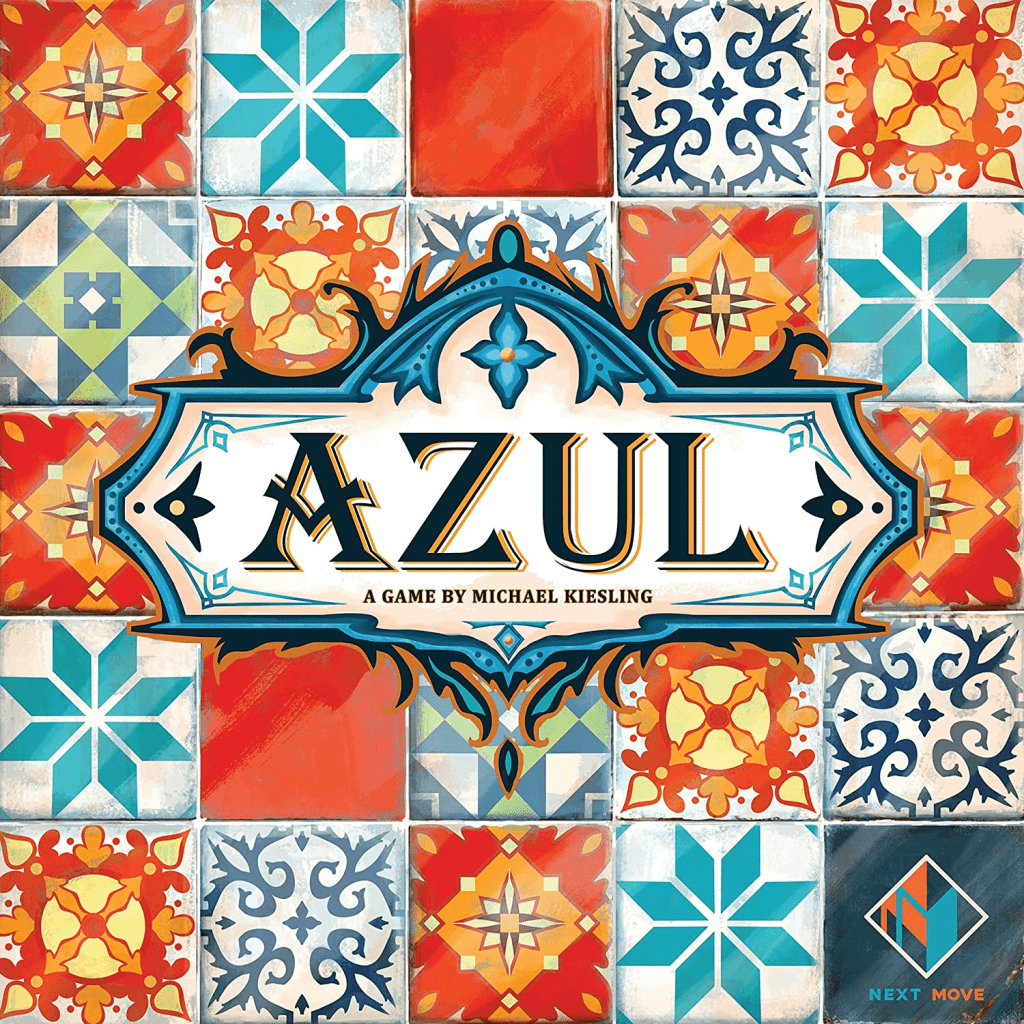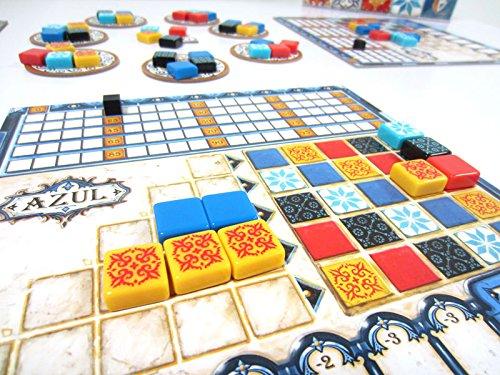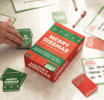Azul – An Unexpectedly Fun Board Game
I was walking by our local Board Game shop the other day and they had this beautiful tile game spread out in the window. What’s that!? I immediately wondered and looked more closely. It was called Azul and it was indeed lovely.
The game Azul, a strategy board game for two to four players, was originally developed in 2016 by game designer Michael Kiesling and has since become one of the most popular board games of all time. The game is inspired by azulejos, Portuguese painted tiles often used to decorate churches and buildings in Portugal. The name ‘Azul’ itself is derived from the Portuguese word for blue, a reference to the deep blue color used on many azulejos. Released in 2017, Azul won the Spiel des Jahres award – the most prestigious game design award of all time – in 2018.
The Look and Feel of Azule
One of the things that makes Azule stand out from other board games is its look and feel. The box looks fun and inviting, with its bright colors and cheerful designs. But once you open up the box, the real surprise comes in the form of the game pieces. Each player gets their own set of hand-painted tiles which have intricate designs on them. The tiles have a weighty feel to them – they are made out of clay – and each one has its own unique pattern on it which makes playing the game even more interesting.
The game pieces in Azul are typically made of ceramic, but can be glass, or plastic. Ceramic pieces tend to be heavier than plastic and glass counterparts, providing a more tactile experience during gameplay. Glass pieces are often intricately designed and offer a stunning visual experience when played on an illuminated board. Plastic game pieces are usually the least expensive option but can still provide hours of entertainment as part of the Azul board game.
There are currently three main versions of Azul available: Azul, the original game; Azul: Stained Glass of Sintra; and Azul: Summer Pavilion. Each version has its own unique board layout, rules, and components, offering a different experience with each game. Players can also purchase expansions for any of the three games which add new tiles, pieces and additional gameplay elements.
How to Play Azul
Azul is played on a five-by-five grid of tiles that represent different colors. The objective of the game is to place five tiles of each color into one’s wall or floor pattern so as to maximize their score. On each turn, a player selects either one or two tiles from the middle of the board and places them onto their wall or floor pattern. Bonus points are awarded for arranging patterns in certain ways on one’s wall or floor pattern. Points are also awarded if walls are completed with all five colors placed in them. Players score penalty points if they fail to complete walls with all five colors, or if they have more than seven tiles left in the middle after placement is finished. The player with the most points at the end of the game is declared the winner.
Why You Should Try Out Azul!
Azul might sound complex but don’t let that scare you away! The rules are actually quite simple once you get familiar with them and playing it can be very enjoyable for both experienced gamers and beginners alike. Its quick playtime (30 minutes) makes it ideal for those looking for something short yet challenging enough to keep everyone entertained for hours on end. Plus, its unique combination of strategy and luck makes every round exciting and unpredictable! Even better, Azul can be played as a team making it perfect for family gatherings or group outings where everyone can join in on some fun competition – no matter your skill level!
I always find the easiest way to learn a game is to watch a YouTube video before opening the box. You can find a full playthrough on JonGetsGames here






